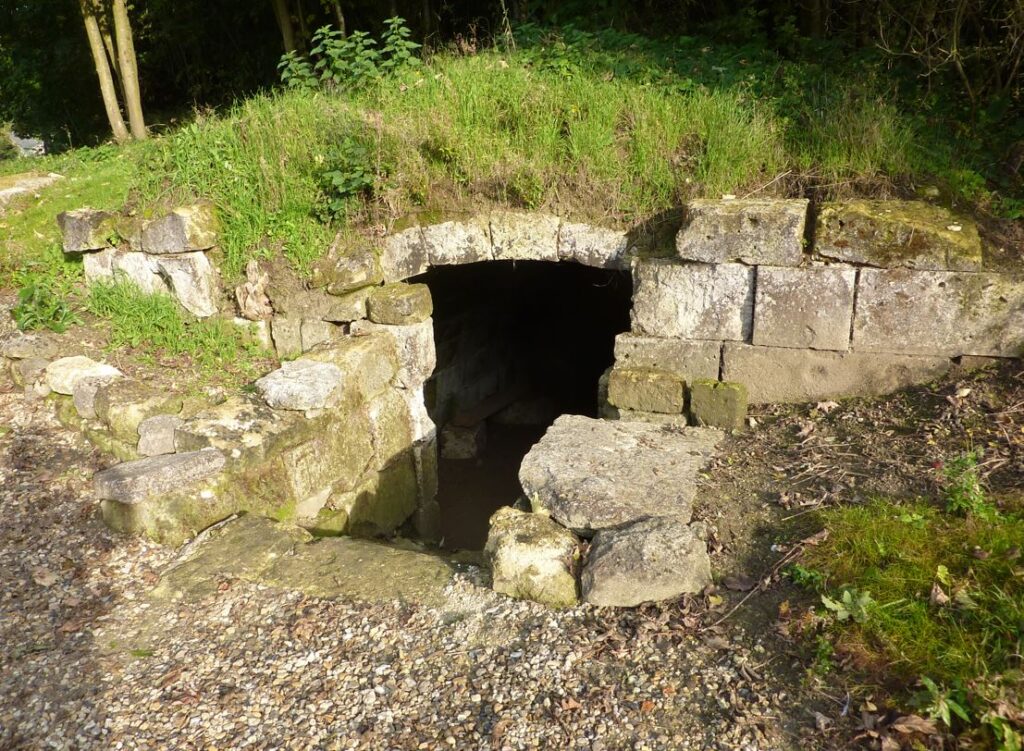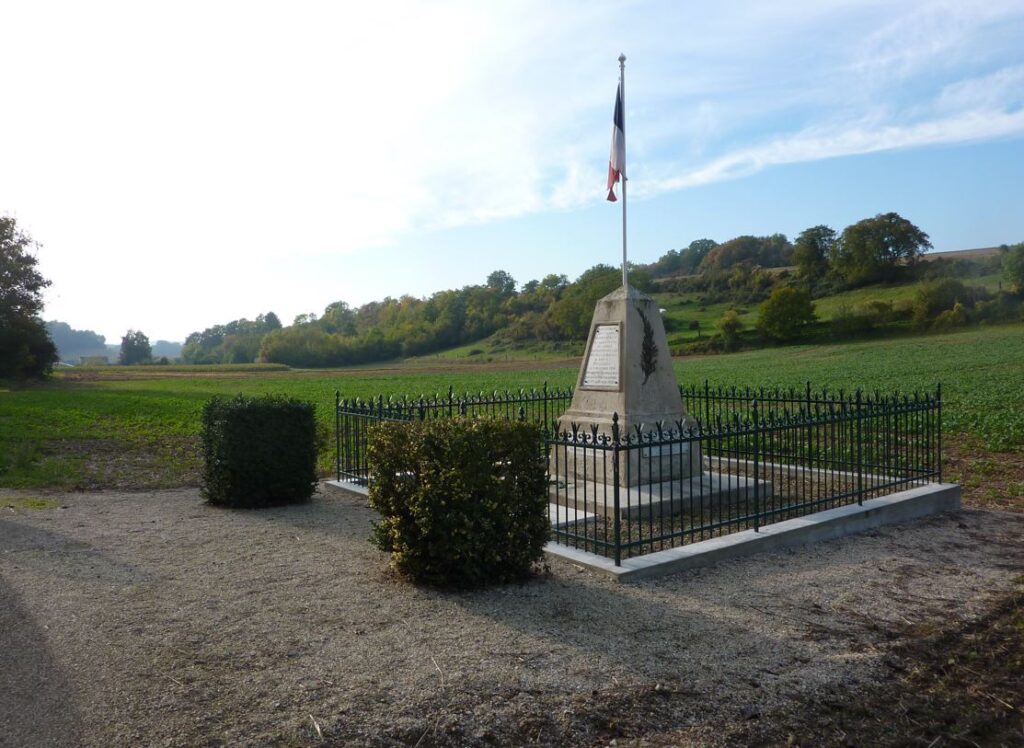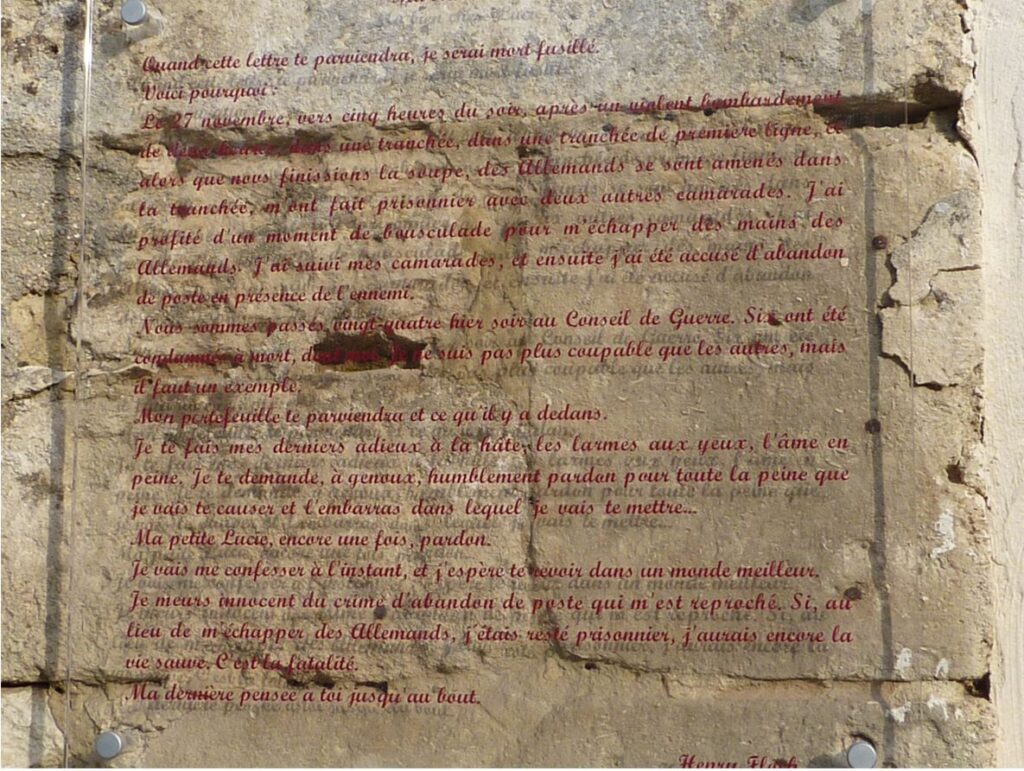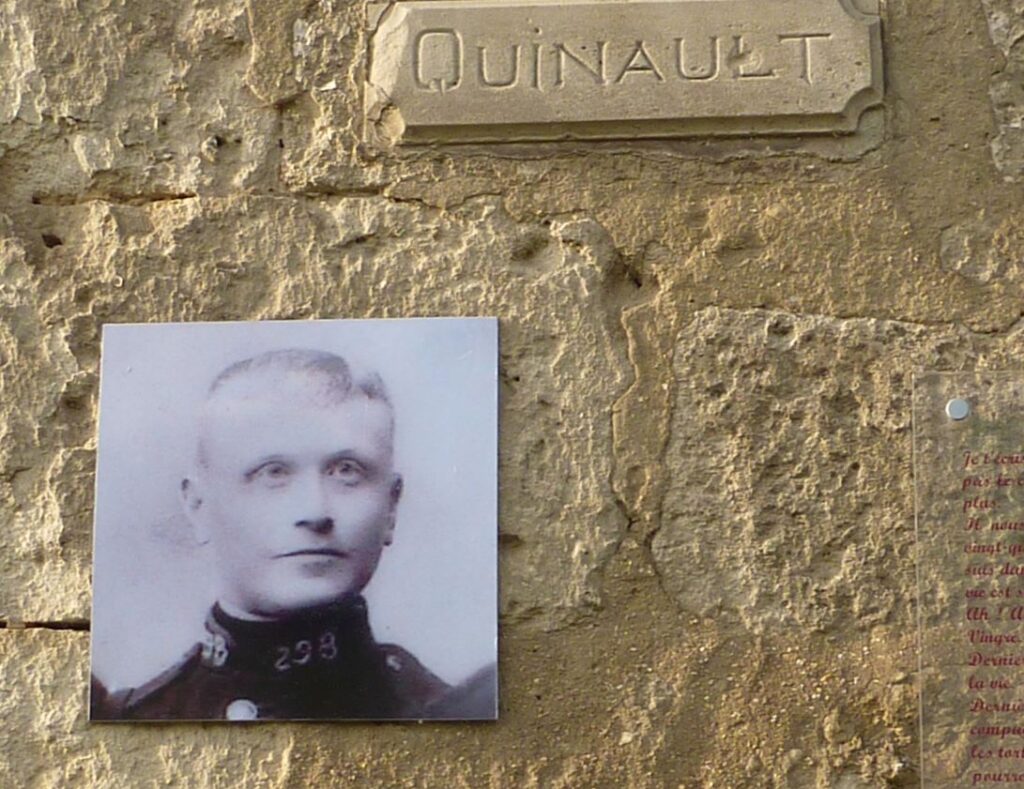We have our own familiar history of the First World War. Ypres, The Somme, trenches – and bewildered distressed young men with “shell shock” shot at dawn for desertion. Other countries have different stories from the war, their own horrors, their own shame. If you travel north east of Paris towards Soissons, you will find where the French Army turned patriotic duty into tragedy in villages along the valley of the River Aisne. The most important of these places is the tiny village of Vingré. It is such an unlikely setting for a remarkable expression of military madness.
At the start of the war, French tactics were no more sophisticated than men in brightly coloured uniforms rushing towards German machine guns. Of course, it didn’t work. Over 1.3 million French soldiers were killed during the war and more than 400,000 of them died in those early days between August and November 1914. Morale was consequently fragile and commanding officers had serious anxieties about the maintenance of discipline.
On 27th November 1914, twenty four French soldiers were under a sustained bombardment. Their officer ordered them to retire so that their position could be re-assessed and a counter-attack organised, whilst leaving eight men behind to monitor enemy movements. German infantry then infiltrated the trenches and captured them, although significantly, two soon escaped.
When the unit re-grouped they were ordered by their Company Commander to retake the position, which they did. Essentially it was a brief and unremarkable skirmish, after which the French defensive line was in exactly the same place as it had been at the start of the bombardment.
However, in the fevered anxieties of the Front Line, all twenty four soldiers were charged with abandoning their posts in the face of the enemy. It was a charge that carried only one penalty – death. There could be no appeal. They explained that they had been following orders from their second lieutenant, but he denied issuing any such instruction, probably to save himself. The accused were defended by an officer selected for them, who knew nothing of the case and was given only two hours to speak to the twenty four accused.
He did his best and, to be honest, the defence was clear and obvious. They had withdrawn strategically, regrouped and then recovered their original position. However the trial was a sham. A guilty verdict had been pre-determined. The soldiers were told to line up as they would have been in the trench. Since the enemy had come from the right, panic must have started there. The inexorable logic of the military mind concluded, therefore, that those on the right were the most guilty and were thus six soldiers were condemned to death as an example to all other potential cowards.
The six men – Corporal Floch and Privates Blanchard, Durantet, Gay, Pettelet, and Quinaud – spent the night of the 3rd December under guard in a bunker and were led out early the next morning to six stakes, six firing squads, and a waiting battalion.
Seventy two rounds were fired in one fearful volley. After they were dead, the battalion was marched past the corpses to the sound of bugles, so that ordinary soldiers could fix in their minds the consequences of desertion – or the consequences of inadequate leadership.
It is impossible to look at that verdict and defend it. It is stupid now and it was stupid then. Everyone knew and was tainted by it. Even their officer who had been determined to save himself, allegedly said that the six men were entirely innocent. Cold comfort indeed.
The verdict contained a considerable irony. Two of the executed, Floch and Gay, had been amongst the look-outs captured by the Germans but had then escaped. As Corporal Floch said in his last letter to his wife, Lucie
“I shall die innocent of the crime of dereliction of duty. If, instead of escaping from the Germans, I had remained a prisoner, my life would have been spared.”
You can if you wish go into the grim cellar which is opposite the memorial. Here they spent their last night – with just a plank of wood to sit on in the dark and the cold.
Waiting.
You may imagine how they tried to understand the arbitrary decision which condemned them and how they prepared for a cruel death from the rifles of their comrades.

You might find it even more moving when you walk through Vingré and see photographs of the six executed men on the walls of the buildings, together with poignant extracts from their last letters home. It is such a simple concept, so very well done, and such a powerful one too. You see their faces. You read their words. Innocent and yet condemned. As their families were too. Look at what Floch says in his letter to Lucie, displayed on the wall of a barn just a short distance from where he died.

“I am no more guilty than the others, but they want to make an example of us. I humbly beg your forgiveness for all the grief that I will cause you and the difficulties that you will have to face because of me…”
That was the point. To be executed in such circumstances would have a huge impact on his family. Lucie would receive no pension or compensation from the state and the whole family would be ostracised by their community. Family members would be unemployable. It seems that Lucie couldn’t get served in shops. Her children were taunted and humiliated at school. Everyone knew he had not died honourably and had not been accorded the important recognition, ‘Mort pour la France.’
The men were eventually exonerated in 1921 by a Court of Cassation. They were finally declared “Morts pour la France” and posthumously awarded the Médaille Militaire and the Croix de Guerre. Their widows were granted back-dated pensions. But of course by then, they were seven years dead.
When I was there, Vingré was peaceful in the warm autumn sunshine and I stood for a long time looking at the monument to those poor soldiers, inaugurated on the 5 April 1925. A squat silent memory of terrible times. You may think that such random cruelty would make comrades angry, rather than compliant. ‘Pour encourager les autres? Hardly. Resentment and fear do not breed loyalty. Cruelty does not breed respect – as the French mutiny on the Chemin des Dames in 1917 would eventually illustrate.
But if Vingré is not enough for you then consider this. In the village of Fontenoy there is another memorial. You can park by the church and walk down the path to the stele, a memorial to Lucien Bersot, who was shot for refusing to wear a pair of trousers.
Bersot shares the memorial with Léonard Leymarie who was an observer in the front line. When he was wounded in the hand during the morning his colleagues suggested that he should go and get his wound dressed. However, he was court martialled at lunch time for abandoning his post in the erroneous belief that the wound was self-inflicted. Léonard was shot in the afternoon and is buried in the vast and sombre French Military Cemetery at Ambleny on the other side of the river. He was rehabilitated in 1923, four years after his wife and two children were taken into the care of the State.
But let’s go back to Lucien Bersot. He was serving in the front line and when his uniform ripped he asked his sergeant for a replacement. There was nothing available so he was told to put on a blood-soaked pair that had previously belonged to his recently-killed friend. His inevitable refusal meant that he was court martialled for disobedience in the face of the enemy and condemned to death. He was shot on 13th February 1915. Seven years later in 1922 he was exonerated by the Court of Appeal.









